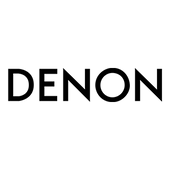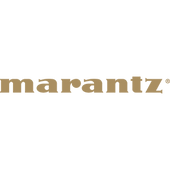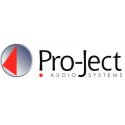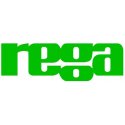Audiolab 8300CDQ nero lettore cd con dac ESS Sabre mqa e DSD
- SKU prodotto: 19874

The 8300CDQ adds further flexibility by incorporating a dedicated direct-coupled headphone amp with current-feedback circuitry. Accessed via a front-mounted 6.35mm socket, its gain bandwidth and high slew rate ensure a dynamic, detailed and engaging performance with all manner of headphone types.
The final key feature introduced in the 8300CDQ is decoding of MQA (Master Quality Authenticated). The brainchild of Meridian Audio co-founder Bob Stuart, MQA is a digital audio format designed for high-resolution music streaming and is available via subscription to Tidal’s ‘HiFi’ tier (among other sources). The 8300CDQ unpacks MQA data – received via the USB input – at the original file’s full resolution and passes the signal through its DAC and preamp stages, ready to feed a power amp or active speakers.
Audiolab’s MQA decoding solution was developed by John Westlake, one of Britain’s foremost digital audio experts. There are various ways to enable MQA playback on audio devices, and not all are equal sonically. Westlake’s solution maximises the format’s potential, just as the 8300CDQ’s design draws the best sound quality from other audio codecs and, of course, CDs
Launched in 2010, the original Westlake-designed Audiolab CD players – the 8200CD and 8200CDQ– were universally acclaimed for their superb sound quality and flexible facilities. In 2015, the 8300 Series arrived and both 8200 Series players were replaced by the 8300CD, building upon its predecessors’ formidable reputation. It has taken until now for this player to be joined by the enhanced 8300CDQ, further developing Audiolab’s classic line of CD players to reach still greater heights.
Aside from the additional functionality outlined above, the 8300CDQ draws upon the exemplary circuitry contained with the existing 8300CD, including:
• Slot-loading CD transport mechanism
Fast in operation and neat in design, the 8300CDQ’s slot-loading CD transport delivers excellent reliability. A read-ahead digital buffer reduces disc-reading errors, enabling scratched CDs that are unreadable by conventional mechanisms to be played. High disc stability and low susceptibility to resonance contribute to the 8300CDQ’s superb CD sound quality.
• High-resolution digital inputs
Five digital inputs comprise 1x asynchronous USB and 4x S/PDIF (2x coaxial and 2x optical). Hi-res digital audio is supported up to 32-bit/384kHz PCM and DSD256, and USB HID compatibility enables driverless control of a connected PC, Mac or media player.
• 32-bit ESS Sabre DAC
The CD transport and digital inputs feed a DAC section with an ESS Sabre32 Reference chip nestling at its heart, utilising HyperStream architecture and ESS Technology’s Time Domain Jitter Eliminator to deliver ultra-low noise and high dynamic range. No company knows more about making the most of this 32-bit, eight-channel hybrid multi-bit Delta-Sigma DAC technology than Audiolab; the 8200CD and 8200CDQ were among the first audio components to use it and the company has been honing its implementation ever since. The conversion process involves 512 DAC elements (256 per channel) each operating at 84.672MHz – all digital audio sources, whatever the sample rate, are upsampled or oversampled to this frequency.
• Exemplary jitter reduction
Around the DAC chip are extensive measures to reduce jitter (digital distortion) to vanishingly low levels. Careful circuit layout and low-noise power supplies complement the DAC’s patented Sabre32 sample rate converter and clever DPLL (Digital Phase Locked Loop) circuit, radically reducing time domain errors from all digital input sources.
• Time domain isolation
While the Sabre32 sample rate converter virtually eliminates jitter within the digital domain, external ‘analogue domain’ induced artefacts caused by RF breakthrough, PSU coupling and so on will affect the DAC’s sonic performance. Audiolab resolves this issue via its CATDA (Cascaded Asynchronous Time Domain Attenuator) circuit. This circuit isolates the DAC substrate from sonically deleterious artefacts that affect non-synchronous digital input data. To achieve the best possible performance, three identical cascaded stages are used – each individual stage provides increased isolation, thereby maximising timing performance, even at higher RF frequencies.
• Selectable digital filters
As digital audio reproduction technology has progressed, the importance of the characteristics of reconstruction digital filters has become more appreciated. The Audiolab 8300CDQ features seven user-selectable filters for PCM audio data (including CD) and four ultrasonic filters for DSD data. These settings allow the user to tune the 8300CD’s performance according to system configuration, digital file quality and personal taste.
• Discrete Class A analogue stages and sophisticated power supply
The 8300CDQ’s analogue output stages and power supply are exceptionally well specified in the pursuit of sonic excellence. The circuitry includes a large, low-noise toroidal transformer, a plethora of reservoir/smoothing capacitors, an impressive number of regulator chips and discrete transistor (instead of op-amp) analogue stages at the output with ultra-low impedance to drive any cable and any load. The power supply incorporates 29 regulated supply rails including multiple ultra-low-noise regulators, with extensive measures against power supply contamination and cross-coupling.
8300CDQ Specifications
Finish
Fine Textured Aluminium (Black / Silver)
Display
POLED 128x64 pixels 2.7"
Standby Feature
Yes
12V Trigger
Yes
CD Mechanism
Slot-Loading
DSD Compatible
Yes (DSD64 / DSD128 / DSD256)
Disc Compatibility
CD/CDR
DAC
ESS Sabre32 9018 chip
Resolution
32 bits
Sampling Frequency
Optical,Coaxial, AES: 32kHz - 192kHz
USB:32kHz - 384kHz(PCM) / DSD64, DSD128, DSD256
Maximum Sampling Frequency
Optical,Coaxial, AES: 192kHz
USB: 384kHz (PCM) / 11.2M (DSD256)
Output Voltage
4.2Vrms ±0.1 (Balanced)
2.1Vrms ±0.1 (Unbalanced)
Output Impedance
10Ω
Total Harmonic Distortion (THD)
<0.002% (1kHz, 0dB, 20Hz ~ 20kHz, A weighted)
Frequency Response
20Hz - 20kHz (± 0.2dB)
Signal to Noise Ratio (S/N)
<-100dB A Weighted (Balanced)
<-98dB A Weighted (Unbalanced)
Dyanmic Range (A Weighted)
>100dB (Balanced)
>98dB (Unbalanced)
Crosstalk (@1kHz)
<-130dB (Balanced)
<-120dB (Unbalanced)
Standby Power Consumption
<0.5W
Power Requirements
240V ~ 50 - 60Hz
230V ~ 50 - 60Hz
115V ~ 50 - 60Hz
100V ~ 50 - 60Hz
Dimension(mm) (W x H x D)
444 X 80 X 317
Carton size(mm) ( W X H X D)
500 x 140 x 455
Weight
6.0kg (Net)
The 8300CDQ adds further flexibility by incorporating a dedicated direct-coupled headphone amp with current-feedback circuitry. Accessed via a front-mounted 6.35mm socket, its gain bandwidth and high slew rate ensure a dynamic, detailed and engaging performance with all manner of headphone types.
The final key feature introduced in the 8300CDQ is decoding of MQA (Master Quality Authenticated). The brainchild of Meridian Audio co-founder Bob Stuart, MQA is a digital audio format designed for high-resolution music streaming and is available via subscription to Tidal’s ‘HiFi’ tier (among other sources). The 8300CDQ unpacks MQA data – received via the USB input – at the original file’s full resolution and passes the signal through its DAC and preamp stages, ready to feed a power amp or active speakers.
Audiolab’s MQA decoding solution was developed by John Westlake, one of Britain’s foremost digital audio experts. There are various ways to enable MQA playback on audio devices, and not all are equal sonically. Westlake’s solution maximises the format’s potential, just as the 8300CDQ’s design draws the best sound quality from other audio codecs and, of course, CDs
Launched in 2010, the original Westlake-designed Audiolab CD players – the 8200CD and 8200CDQ– were universally acclaimed for their superb sound quality and flexible facilities. In 2015, the 8300 Series arrived and both 8200 Series players were replaced by the 8300CD, building upon its predecessors’ formidable reputation. It has taken until now for this player to be joined by the enhanced 8300CDQ, further developing Audiolab’s classic line of CD players to reach still greater heights.
Aside from the additional functionality outlined above, the 8300CDQ draws upon the exemplary circuitry contained with the existing 8300CD, including:
• Slot-loading CD transport mechanism
Fast in operation and neat in design, the 8300CDQ’s slot-loading CD transport delivers excellent reliability. A read-ahead digital buffer reduces disc-reading errors, enabling scratched CDs that are unreadable by conventional mechanisms to be played. High disc stability and low susceptibility to resonance contribute to the 8300CDQ’s superb CD sound quality.
• High-resolution digital inputs
Five digital inputs comprise 1x asynchronous USB and 4x S/PDIF (2x coaxial and 2x optical). Hi-res digital audio is supported up to 32-bit/384kHz PCM and DSD256, and USB HID compatibility enables driverless control of a connected PC, Mac or media player.
• 32-bit ESS Sabre DAC
The CD transport and digital inputs feed a DAC section with an ESS Sabre32 Reference chip nestling at its heart, utilising HyperStream architecture and ESS Technology’s Time Domain Jitter Eliminator to deliver ultra-low noise and high dynamic range. No company knows more about making the most of this 32-bit, eight-channel hybrid multi-bit Delta-Sigma DAC technology than Audiolab; the 8200CD and 8200CDQ were among the first audio components to use it and the company has been honing its implementation ever since. The conversion process involves 512 DAC elements (256 per channel) each operating at 84.672MHz – all digital audio sources, whatever the sample rate, are upsampled or oversampled to this frequency.
• Exemplary jitter reduction
Around the DAC chip are extensive measures to reduce jitter (digital distortion) to vanishingly low levels. Careful circuit layout and low-noise power supplies complement the DAC’s patented Sabre32 sample rate converter and clever DPLL (Digital Phase Locked Loop) circuit, radically reducing time domain errors from all digital input sources.
• Time domain isolation
While the Sabre32 sample rate converter virtually eliminates jitter within the digital domain, external ‘analogue domain’ induced artefacts caused by RF breakthrough, PSU coupling and so on will affect the DAC’s sonic performance. Audiolab resolves this issue via its CATDA (Cascaded Asynchronous Time Domain Attenuator) circuit. This circuit isolates the DAC substrate from sonically deleterious artefacts that affect non-synchronous digital input data. To achieve the best possible performance, three identical cascaded stages are used – each individual stage provides increased isolation, thereby maximising timing performance, even at higher RF frequencies.
• Selectable digital filters
As digital audio reproduction technology has progressed, the importance of the characteristics of reconstruction digital filters has become more appreciated. The Audiolab 8300CDQ features seven user-selectable filters for PCM audio data (including CD) and four ultrasonic filters for DSD data. These settings allow the user to tune the 8300CD’s performance according to system configuration, digital file quality and personal taste.
• Discrete Class A analogue stages and sophisticated power supply
The 8300CDQ’s analogue output stages and power supply are exceptionally well specified in the pursuit of sonic excellence. The circuitry includes a large, low-noise toroidal transformer, a plethora of reservoir/smoothing capacitors, an impressive number of regulator chips and discrete transistor (instead of op-amp) analogue stages at the output with ultra-low impedance to drive any cable and any load. The power supply incorporates 29 regulated supply rails including multiple ultra-low-noise regulators, with extensive measures against power supply contamination and cross-coupling.
8300CDQ Specifications
Finish
Fine Textured Aluminium (Black / Silver)
Display
POLED 128x64 pixels 2.7"
Standby Feature
Yes
12V Trigger
Yes
CD Mechanism
Slot-Loading
DSD Compatible
Yes (DSD64 / DSD128 / DSD256)
Disc Compatibility
CD/CDR
DAC
ESS Sabre32 9018 chip
Resolution
32 bits
Sampling Frequency
Optical,Coaxial, AES: 32kHz - 192kHz
USB:32kHz - 384kHz(PCM) / DSD64, DSD128, DSD256
Maximum Sampling Frequency
Optical,Coaxial, AES: 192kHz
USB: 384kHz (PCM) / 11.2M (DSD256)
Output Voltage
4.2Vrms ±0.1 (Balanced)
2.1Vrms ±0.1 (Unbalanced)
Output Impedance
10Ω
Total Harmonic Distortion (THD)
<0.002% (1kHz, 0dB, 20Hz ~ 20kHz, A weighted)
Frequency Response
20Hz - 20kHz (± 0.2dB)
Signal to Noise Ratio (S/N)
<-100dB A Weighted (Balanced)
<-98dB A Weighted (Unbalanced)
Dyanmic Range (A Weighted)
>100dB (Balanced)
>98dB (Unbalanced)
Crosstalk (@1kHz)
<-130dB (Balanced)
<-120dB (Unbalanced)
Standby Power Consumption
<0.5W
Power Requirements
240V ~ 50 - 60Hz
230V ~ 50 - 60Hz
115V ~ 50 - 60Hz
100V ~ 50 - 60Hz
Dimension(mm) (W x H x D)
444 X 80 X 317
Carton size(mm) ( W X H X D)
500 x 140 x 455
Weight
6.0kg (Net)
• Quanto costa il trasporto?
Spedizioni in Italia
La spedizione è sempre gratis per acquisti superiori a 50,00 euro.
La promozione non è applicabile per le spedizioni in CONTRASSEGNO.
Per alcuni prodotti è opzionale l'aggiunta dell'assicurazione (per prodotti molto voluminosi e costosi).
Spedizioni estere in Europa
Per le spedizioni in paesi europei bisogna contattare a mezzo mail il nostro responsabile che vi indicherà in base all'oggetto scelto i costi e tempi di spedizione (approssimativi). Se si effettua l'ordine inserendo come indirizzo di spedizione una località estera europea, il nostro personale appena visionerà l'ordine invierà una mail con il costo della spedizione aggiuntivo da aggiungere al relativo ordine, il costo sarà cosi' sommato all'ordine e reinviata una mail di conferma che permetterà solo in quel momento al cliente di poter eseguire il pagamento con la modalità scelta.
• Quanto tempo occorre per la consegna?
L'ordine sarà evaso entro uno/due giorni lavorativi (ove il prodotto sia disponibile) a partire dal giorno in cui l'ordine verrà perfezionato.
L'ordine è considerato "perfezionato" nel momento in cui:
- conferma di ricezione del pagamento attraverso le varie modalità possibili (mail :info@audioevolution.it)
• Come faccio a rendere la merce difettosa?
Basta mettersi in contatto con noi spedendo una e-mail all'indirizzo: info@audioevolution.it
• Spedizioni assicurate
Per assicurare le vostre spedizioni, vi chiediamo cortesemente di contattarci per conoscere i costi precisi, consigliamo vivamente di assicurare la vostra spedizione.


























